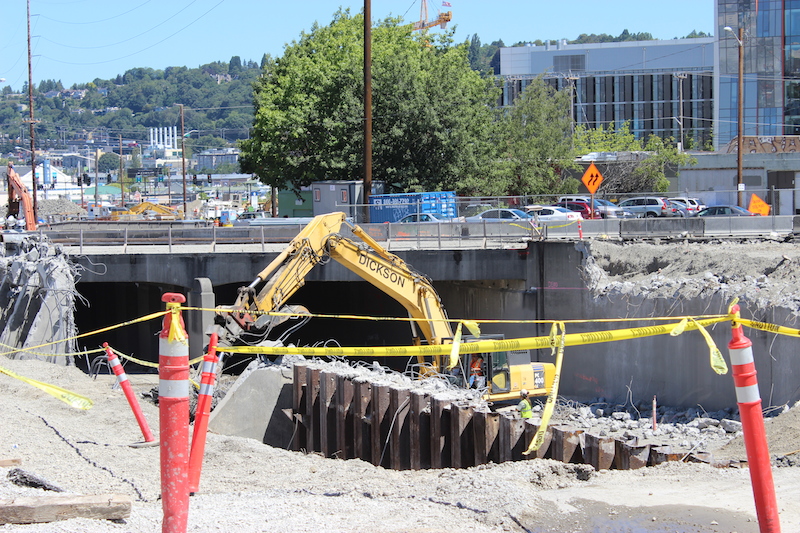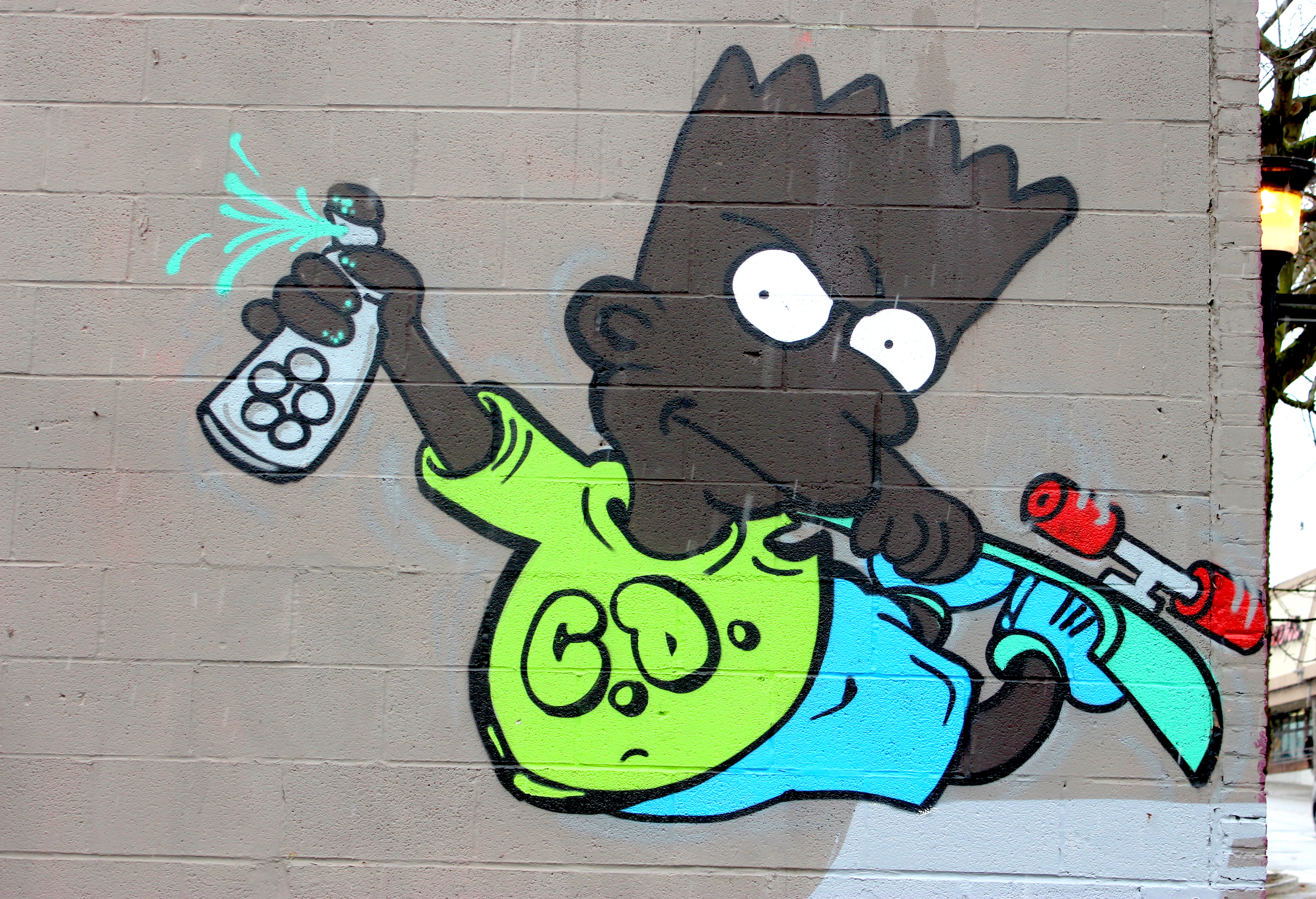Above: One day far in the future, Bertha’s hole will connect to this big hole.
Behind WSDOT’s hard-helmeted Matt Preedy are 15 construction cranes and a bridge. The construction cranes will probably be there for a while, but the bridge will not.
“Now, the Broad Street bridge portion of SR99 you see right there, that’s going to be demolished on August 22,” Preedy, deputy program administrator for WSDOT says. “Right now, the grade of the bridge isn’t right for the north tunnel portal that’ll hook up to it, so it’s gotta come down.”
From 10 p.m. on August 22 through 5 a.m. on Aug 27, SR 99 will be closed because of this.
“Anticipate significant amounts of congestion these four days,” Preedy says.
The debris and rubble from the demolished bridge will be repurposed to build a new temporary road on top that will open SR 99 back up at the end of those four days. But in the interim, there are going to be a lot of very angry commuters.
For about a year now, WSDOT’s SR 99 bored tunnel team has had to deliver lots of bad news to the city. Bertha, the infamous immobile tunneling machine whose mighty force was thwarted by a small pipe, is costing the state heaps of money. The irony of the state throwing cash into a literal giant hole downtown isn’t lost on Seattlites. The project has become a symbol of local ineptitude in the popular consciousness.
Work on the south end of the project, where a broken Bertha is being fished out of her hole, usually gets most of the focus. But up here on the north end of the project, where Bertha will (one day) poke her head out and connect the new SR 99 to the old, work is progressing at a fast clip.
“The tunnel machine doesn’t effect the work here one bit,” Preedy says. After 9 months of digging, workers have created an 80 ft deep, 100 ft wide hole, reinforced the walls, and begun serious construction on the double decker ramps for this north portal.
“You know, we all certainly wish Bertha was working,” Laura Newborn, WSDOT’s media relations manager said, “but when people say ‘let’s stop,’ I don’t think they understand the scale of the work we’ve already done. It’s so big, people don’t see this end of it—the guys down there are incredibly proud of the work they’re doing.”








